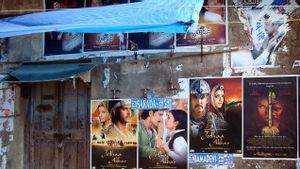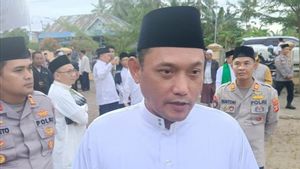YOGYAKARTA Tari saman: history and facts, are very interesting to watch. Tari Saman is a traditional dance that is included in the institutional cultural heritage (ICH) or intangible cultural heritage recognized by UNESCO.
According to the official website of the Indonesian Ministry of Education and Culture, the same dance is one of the regional arts that comes from and develops in the Gayo community in Gayo, Lues, Southeast Aceh, East Aceh (Serbejadi District), Aceh Tamiang Regency (Tamiang Hulu).
In the past, this tradition was often carried out by young men to fill their spare time, both in the fields, even after the Koran.
In addition, the same dance is also often practiced and used as a medium of friendship, establishing friendship, preaching media, and conveying moral messages.
This article will discuss the same dance: history and interesting facts about it. Let's see the full information below.
Compiled from various sources, Saturday, June 15, 2024, the same dance was created by a cleric named Sheikh Saman in the XIV AD century.
The same dance comes from the Gayo highlands, which administratively covers the Central Aceh Regency area.
At the beginning of its development, this traditional Aceh dance was used as a medium of da'wah to the local community. At that time, before the dance is performed, traditional leaders will give advice to the audience as well as their own players.
On the other hand, the same dance performance is also thick with da'wah and petuah lyrics, which use Gayo and Arabic.
The same dance at the beginning of its development is often shown during the commemoration of the Prophet's Birthday. Now, traditional arts are usually performed to welcome guests of honor or various other cultural events.
There are several interesting facts about the same dance that make it even more special, including:
1. Dubbed a thousand hand dance
An interesting fact about the first sain dance is that this traditional Aceh dance is dubbed as a thousand hand dance. This is because the same dancers have to concentrate on doing every movement so that when doing fast movements there is always control and fast movement.
In addition, the movement must also be the same as other dancers. While the legs stick to their seats.
Therefore, the same dance only has one floor pattern, namely a straight-line floor pattern that is horizontally aligned from the view of the audience.
2. Have some elements of movement
Another interesting fact is that the same dance has several elements of movement, namely applause and chest applause. This movement is in the form of shaking motion, tyrep, lingang, and surang-surong movements.
Another movement from the Saman dance in the form of two lines of singing dancers while applauding and other dancers harming the movement.
Not only that, there is also the dominant movement of hands. There are various kinds of hand movements, such as cilok (light movement of the tip of the finger), cerkop (both hands narrow and directional), and tepok (motion of applause in various positions).
SEE ALSO:
3. Performed without music accompaniment
The same dance is performed without music. This dance only uses the voices of their dancers and applause which are usually combined with hitting their chest and groin as a synchronization and throwing bodies in various directions.
In its performance, the same dancer is guided by a leader who is usually called Syekh. Saman and syekh dancers must be able to work well together in order to create a harmonious and compact movement.
4. So UNESCO acknowledged intangible cultural heritage
The same dance has been recognized by UNESCO as an intangible cultural heritage. The same dance has become a form of one of the performing arts that is used as a means of communication, establishing friendship, conveying moral messages, rhymes for the younger generation, representing nature and the surrounding environment, and so on.
That's information about dance: history and facts. Hopefully this article can add insight to the loyal readers of VOI.ID.
The English, Chinese, Japanese, Arabic, and French versions are automatically generated by the AI. So there may still be inaccuracies in translating, please always see Indonesian as our main language. (system supported by DigitalSiber.id)


















